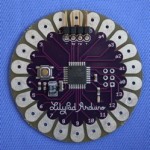Mar31
Arduino: A Tale of Innovation through Open Source
Point: A collectively-motivated group of peers can develop innovations in a distributed online environment.
Story: When Hernando Barragán created a nontechie-friendly microcontroller board for artists, designers, and architects in 2004, his thesis adviser, Massimo Banzi, liked the idea. But Banzi wanted something simpler and cheaper for use in design class projects at the Interaction Design Institute Ivrea in Italy. In particular, Banzi wanted a low cost, an integrated software environment, programmability via an everyday USB port, and a project supported by a community.
So Massimo Banzi, David Cuartielles, Dave Mellis, Gianluca Martino and Nicholas Zambetti created Arduino, an easy-make, easy-to-use circuit board about the size of a business card. Anyone can use the device to create all manner of computer-controlled devices such as prototypes of products, pieces of art, or just fun hobbyist contraptions. The team’s device was about 1/3 the price of the predecessor device and 1/3 the price of commercial products. Best if all, the group released Arduino under Creative Commons Attribution-ShareAlike licensing, which means anyone can copy the Arduino and make the circuit board without payment or permission from the Arduino group.
The Arduino project uses open source methods to develop its hardware and software. Open source is a type of connected innovation based on the collective contribution of peer innovators to a project or product. Open source allows free access to the internal design specification of the product such that anyone in the world can modify the design to correct a problem, improve performance, or add a new feature. With this openness comes a cultural norm that if someone does improve the design, then they should share that improvement with the community for inclusion in the public version of the design. Through this open process, Arduino now has 12 different models and 5 supplementary function boards.
Arduino, like other open source projects, relies heavily on connective technologies to coordinate its loose global team of project participants. Email lists, online wikis, discussion forums, and content management systems help the project participants maintain the core product as well as developing new ideas that later become incorporated in the main products. Arduino uses Google Code to host the project to provide a central connection point for anyone who wants the software. People can report defects or suggest enhancements. Google’s tools help the project participants track the status, priority, and milestones of the idea. Other tools aid collaborative problem solving. The main Arduino discussion forum has nearly 70 thousand members and over 700 thousand posts on some 90 thousand topics.
Action:
- Determine if there’s some technology that you (and others) need more access or control over than is permitted by commercial suppliers with proprietary products
- Start an open source project to create and share the technology
- Use connection technologies to link to distant contributors and coordinate activities
- Pool innovation from across the technical and user community
2 Comments »Case study, How-to, Innovation, open innovation
2 Responses to “Arduino: A Tale of Innovation through Open Source”










Bing Chou Apr 1st 2012 at 10:24 am 1
Andrea, I recently watched a documentary about Arduino and the community that has grown around it. The board’s ability to let programmers, artists, tinkerers, and the like unleash their creativity in a dizzying number of ways is pretty amazing. I can’t wait to buy one and start playing around with its ability to tie a web application to hardware – my only fear is that my precious free time will be held hostage by this new hobby.
Andrea Meyer Apr 4th 2012 at 02:07 pm 2
I’m glad you brought that up, Bing. An innovation like Arduino is an example of a powerful meta-innovation — an innovation that encourages others to innovate. Although microcontrollers may be decades old — one could buy Intel microprocessors at Radio Shack back in the late 1970s — microcontrollers like Arduino massively expand the opportunities for microcontroller-based innovations by lowering the cost and learning barriers. The greater the number of people playing around with devices like Arduino, the greater the number of really cool innovations. The ability to do-it-yourself is a powerful long-term trend in innovation. Devices such as Arduino also enable frugal innovation and lean entrepreneurship whereby people might start something as a hobby only to discover they’ve got the next-big-thing and the ability to bring it to market.
You might enjoy SparkFun.com, which is a Boulder company dedicated to selling all the fun tidbits that let people do amazing things with home-made hobby electronics and computers. On second thought, if you value your free time, then maybe avoid SparkFun.com 😉